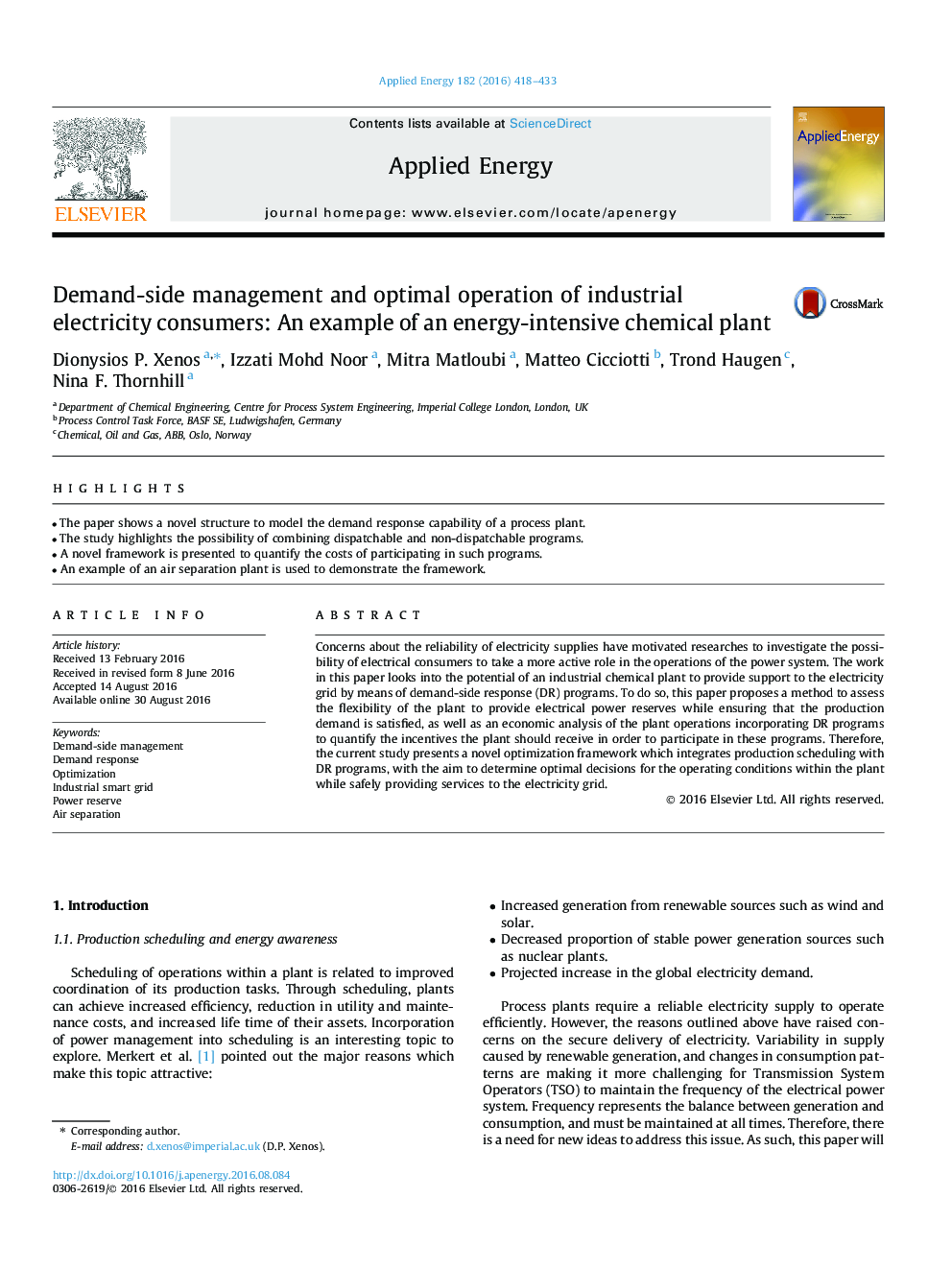| Article ID | Journal | Published Year | Pages | File Type |
|---|---|---|---|---|
| 6478923 | Applied Energy | 2016 | 16 Pages |
â¢The paper shows a novel structure to model the demand response capability of a process plant.â¢The study highlights the possibility of combining dispatchable and non-dispatchable programs.â¢A novel framework is presented to quantify the costs of participating in such programs.â¢An example of an air separation plant is used to demonstrate the framework.
Concerns about the reliability of electricity supplies have motivated researches to investigate the possibility of electrical consumers to take a more active role in the operations of the power system. The work in this paper looks into the potential of an industrial chemical plant to provide support to the electricity grid by means of demand-side response (DR) programs. To do so, this paper proposes a method to assess the flexibility of the plant to provide electrical power reserves while ensuring that the production demand is satisfied, as well as an economic analysis of the plant operations incorporating DR programs to quantify the incentives the plant should receive in order to participate in these programs. Therefore, the current study presents a novel optimization framework which integrates production scheduling with DR programs, with the aim to determine optimal decisions for the operating conditions within the plant while safely providing services to the electricity grid.
